Microsoft Azure is a cloud computing platform that provides a wide variety of services that we can use without purchasing and arranging our hardware. It enables the fast development of solutions and provides the resources to complete tasks that may not be achievable in an on-premises environment. Azure Services like compute, storage, network, and application services allow us to put our effort into building great solutions without worrying about the assembly of physical infrastructure.
This tutorial covers the fundamentals of Azure, which will provide us the idea about all the Azure key services that we are most likely required to know to start developing solutions. After completing this tutorial, we can crack job interviews or able to get different Microsoft Azure certifications.
What is Azure
Microsoft Azure is a growing set of cloud computing services created by Microsoft that hosts your existing applications, streamline the development of a new application, and also enhances our on-premises applications. It helps the organizations in building, testing, deploying, and managing applications and services through Microsoft-managed data centers.
Azure Services
- Compute services: It includes the Microsoft Azure Cloud Services, Azure Virtual Machines, Azure Website, and Azure Mobile Services, which processes the data on the cloud with the help of powerful processors.
- Data services: This service is used to store data over the cloud that can be scaled according to the requirements. It includes Microsoft Azure Storage (Blob, Queue Table, and Azure File services), Azure SQL Database, and the Redis Cache.
- Application services: It includes services, which help us to build and operate our application, like the Azure Active Directory, Service Bus for connecting distributed systems, HDInsight for processing big data, the Azure Scheduler, and the Azure Media Services.
- Network services: It helps you to connect with the cloud and on-premises infrastructure, which includes Virtual Networks, Azure Content Delivery Network, and the Azure Traffic Manager.
How Azure works
It is essential to understand the internal workings of Azure so that we can design our applications on Azure effectively with high availability, data residency, resilience, etc.
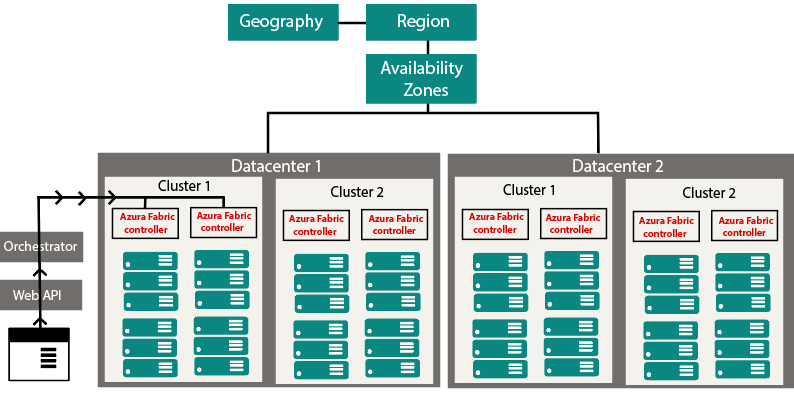
Microsoft Azure is completely based on the concept of virtualization. So, similar to other virtualized data center, it also contains racks. Each rack has a separate power unit and network switch, and also each rack is integrated with a software called Fabric-Controller. This Fabric-controller is a distributed application, which is responsible for managing and monitoring servers within the rack. In case of any server failure, the Fabric-controller recognizes it and recovers it. And Each of these Fabric-Controller is, in turn, connected to a piece of software called Orchestrator. This Orchestrator includes web-services, Rest API to create, update, and delete resources.
When a request is made by the user either using PowerShell or Azure portal. First, it will go to the Orchestrator, where it will fundamentally do three things:
- Authenticate the User
- It will Authorize the user, i.e., it will check whether the user is allowed to do the requested task.
- It will look into the database for the availability of space based on the resources and pass the request to an appropriate Azure Fabric controller to execute the request.
Combinations of racks form a cluster. We have multiple clusters within a data center, and we can have multiple Data Centers within an Availability zone, multiple Availability zones within a Region, and multiple Regions within a Geography.
- Geographies: It is a discrete market, typically contains two or more regions, that preserves data residency and compliance boundaries.
- Azure regions: A region is a collection of data centers deployed within a defined perimeter and interconnected through a dedicated regional low-latency network.
Azure covers more global regions than any other cloud provider, which offers the scalability needed to bring applications and users closer around the world. It is globally available in 50 regions around the world. Due to its availability over many regions, it helps in preserving data residency and offers comprehensive compliance and flexible options to the customers.
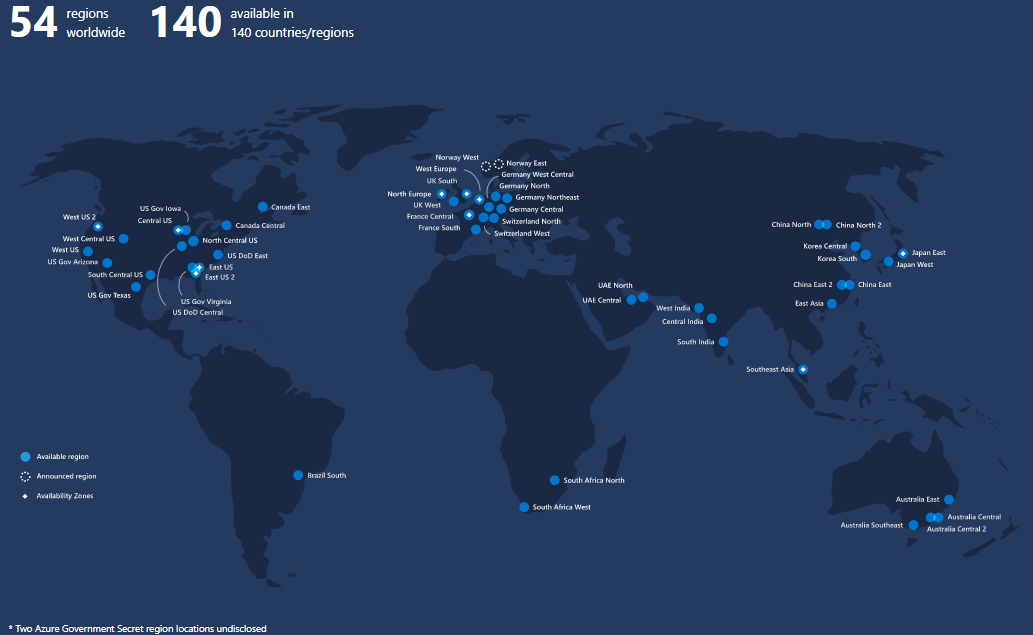
- Availability Zones: These are the physically separated location within an Azure region. Each one of them is made up of one or more data centers, independent configuration.
Azure Pricing
It is one of the main reasons to learn Microsoft Azure. Because Microsoft is providing free Credits in the Azure account to access Azure services for free for a short duration. This credit is sufficient for people who are new at Microsoft Azure and want to use the services.
Microsoft offers the pay-as-you-go approach that helps organizations to serve their needs. Typically the cloud services will be charged based on the usage. The flexible pricing option helps in up-scaling and down-scaling the architecture as per our requirements.
Azure Certification
Microsoft Azure helps to fill the gap between the industry requirement and the resource available. Microsoft provides Azure Certification into three major categories, which are:
- Azure Administrator: Those who implement, monitor, and maintain Microsoft Azure solutions, including major services.
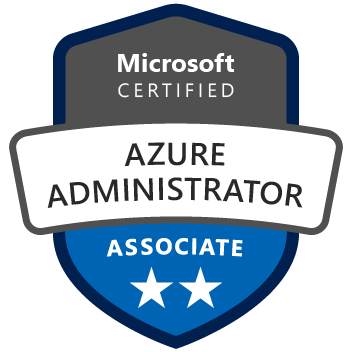
- Azure Developer: Those who design, build, test, and maintain cloud solutions, such as applications and services, partnering with cloud solution architects, cloud DBAs, cloud administrators, and clients to implement these solutions.
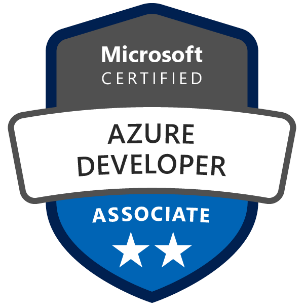
- Azure Solution Architect: Those who have expertise in compute, network, storage, and security so that they can design the solutions that run on Azure.
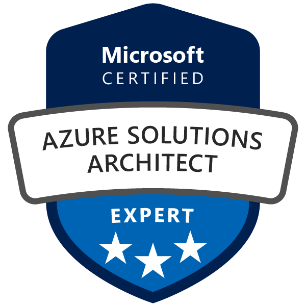
All these certifications are divided into different levels. If anyone is planning to get certified, then he/she first has to get an associate-level certification and then go for the advanced level.
Prerequisite
Before Learning AWS, one should have basic knowledge of cloud computing and computer fundamentals.
Audience
Our Microsoft Azure tutorial is designed for students and working IT professionals who are new to Cloud Computing and want to pursue or switch their career path as Microsoft Azure Developer or Administrator.
Scope of this tutorial
We will see the overview of cloud computing, the inner working of Azure, and how azure allocate resources. After that, we will dive into the different areas of Azure services i.e., Storage services, Compute services, Network services, App services, Data Bases, Analytics, Integration services, IoT, Security services, Monitoring and Diagnostics, and Tools. This tutorial also provides the idea about creating VMs, website and storage accounts, etc.

No comments:
Post a Comment